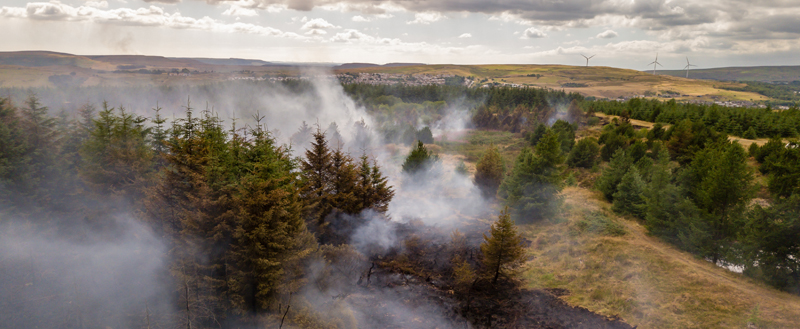;)
Of the 44 Fire and Rescue Services in England, the Home Office categorise 13 FRA as predominantly rural, with a further 17 classed as being significantly rural. When adding this to the 3 Welsh Forces and Scottish Fire, each with their sizeable areas of rurality, it is clear that many FRAs across the UK are dealing with the specific challenges presented in providing Response, Protection and Prevention in rural areas. This article highlights 5 of the most common challenges seen when working with rural services.
1. Rural – tends to mean remote and isolated
Many rural services have significant geography to cover. Mid and West Wales FRS, for example, has the largest footprint in England and Wales with responsibility for a massive 4,500 square miles. With such a vast area to cover this can have an impact not only on longer travel times but also on a greater reliance on On-Call crewing arrangements.
For some of these FRA, there may also be limited scope for mutual aid from other fire services as their isolated location may limit the scope for ‘over the border’ support.
2. On-Call availability issues
Many rural services are finding maintaining On-Call availability a massive challenge. There can be distinct types of On-Call availability challenges, in some cases, stations are struggling to maintain their numbers; while in others, changes to working practices in the wider communities have made maintaining availability during traditional office hours (Monday-Friday 0800-1800) difficult.
3. Increasing levels of attrition
Historically Firefighting was a job for life, whereas presently many FRS are seeing increasing levels of attrition with people moving on to other careers. Increased levels of turnover have put pressure on the ability to maintain resourcing numbers as well as the levels of skills and competence. In some services they have also seen a tendency for people to join as a Retained firefighter, viewing this as a steppingstone to finding a Wholetime position. A phenomenon which might suit the Wholetime recruitment but exacerbates problems with retained availability.
4. Increasing Response Times
Many services with significant rural areas have seen response times to incidents rise over the past few years. One of the challenges rural services faces is that inevitably the areas served by the small number of Wholetime appliances tend to receive a quicker response than those living in areas served by On-Call pumps, which can lead to the feeling of different standards across the county
5. Challenges of aligning resources to risk
There can be differences in the way that Protection and Prevention activities are conducted across Rural services. Historically crews have been targeted or encouraged to pick up Fire Prevention initiatives. However, this is far easier to schedule and do with Wholetime crews as opposed to those reliant on On-Call. Perversely the fire protection advice in the rural services may be more important as these are properties which would see increased response times.
There should be a recognition that rural fire services face several additional challenges linked to their structures, geography and demographics all of which must be part of the consideration when undertaking risk reviews such as the Community Risk Management Plans.